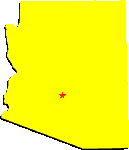2007 Arizona Mule Deer Harvest Forecast

Excerpt from Mule Deer Fanatic Yahoo group moderator:
Overall, mule deer numbers are up a bit from, say, any time in the last 5 years. Winters here rarely kill deer. We are certainly still in a drought condition even though there has been some well-timed relief that has benefitted deer. Water and its quality is always an issue here. Drought has a significant effect on deer here in Arizona, but it’s effect is multi-faceted. Because feed is not as good in drought, nor as abundant – deer are in worse condition than normal. In my opinion this makes them more succeptable to disease, to getting hit on the roads, to predation, to hunting pressure, and to gestation and delivery problems.
The Arizona Game and Fish has increased the number of deer tags this year, which I think is a mistake. (I would much rather the GnF decrease predators instead of decreasing hunters, but since predators are not being decreased, we cannot afford to have more hunters).We are no where near our carrying capacity and the extra pressure will make it even harder for the deer herd to recover. The North Kaibab herd is still dismal, even though there are some very large bucks to be found there. The extra tags to be given there is especially unfortunate.
Predation is a very serious issue here. I estimate the predator populations as follows: lions: 4-6000, bears: 2-6000, coyotes: 40-60,000. These numbers should serve to illustrate that drought (nor any other weather condition) is not what is limiting our deer numbers – compared to predators.
I think there will be more bucks seen and killed in 2007, mostly yearling bucks. I think the older class buck numbers are down from last year. Antler development, from what I have seen, has been hurt by feed quality, and seems to be a little late this year. I don’t think our fawn/doe ratio will exceed 0.5/1.0. I have done some counts of my own this year and my results are: for every hundred deer, 30 are yearlings – of which 18 are bucks, with another 10 older bucks and 60 older does. So the pre-season buck/doe ratio is 28% (64% yearlings). The carryover fawn/doe ratio is 50%.
The Arizona Game and Fish wants to move hunting seasons to low-success time periods, so that they can increase the number of tags even further. If a rancher was losing his livestock to predators, I’ll bet he would like to be able to sell livestock he didn’t have just like the GnF does.
Arizona should have a better harvest than in quite a while due to having a few more bucks and more hunters. I predict that there will be even fewer mature bucks next year than this year.
Moderator
